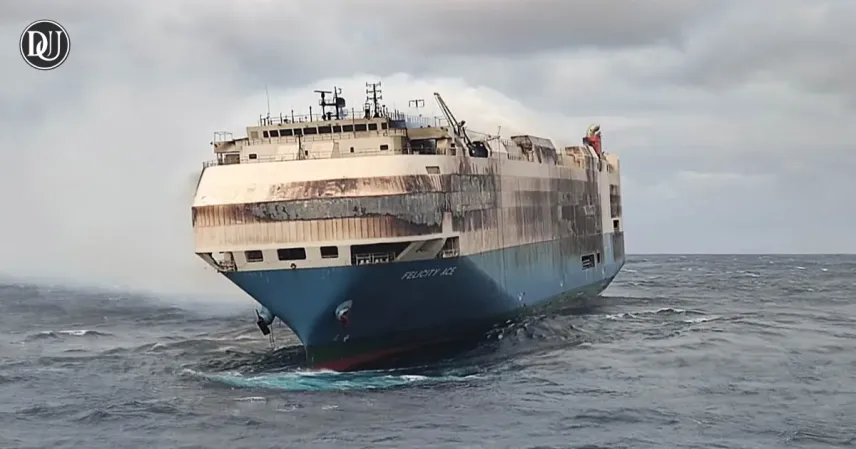Okay, so here's something that genuinely stopped me in my tracks today. You know how everyone's talking about electric vehicles, and how they're the future? Well, apparently, the future can be a bit… fiery. Turns out, there was this massive cargo ship, the Felicity Ace, carrying thousands of luxury cars, including a bunch of EVs, that caught fire in the middle of the Atlantic back in 2022. And now, get this, another one! This time, it's a ship called the MV Fremantle Highway, stuck in the North Sea. It was loaded with around 3,783 cars, with almost 500 of them being EVs, and it just burst into flames. Makes you wonder, right?
What's Really Going On with These Fires?
Honestly, when I first heard about the Felicity Ace, I thought, 'Okay, maybe it was a one-off.' But two major incidents involving car carriers and EV fires? That's a pattern that got me thinking. The official word on the Felicity Ace was that the fire started in the cargo hold and spread. While they never definitively blamed the EVs, the fact that they were on board and their batteries are known to be tricky once they catch fire is a huge part of the conversation. And now, the MV Fremantle Highway. This one sounds even scarier because a crew member actually died, and others were injured trying to escape the blaze.
- The MV Fremantle Highway was carrying 3,783 vehicles, with 498 of them being EVs. That's a lot of high-voltage batteries on one ship.
- Firefighters have been battling this thing for days, and it's a nightmare. Imagine trying to put out a fire on a floating metal box with thousands of cars inside.
- One of the big concerns with EV fires is thermal runaway. Basically, once one battery cell catches fire, it can create a chain reaction in other cells, making it incredibly difficult to extinguish.
![]()
Now, I know what you're thinking: 'Are EVs inherently more dangerous?' It's a fair question, and honestly, it's something the shipping industry is grappling with. While traditional cars can catch fire too, EV battery fires present unique challenges because of their intensity and the chemicals involved. We're talking about massive energy density in those battery packs, which is great for driving range but not so great when things go wrong on a ship.
What This Actually Means for Us
So, why does this matter to the average person? Well, for starters, it raises questions about the safety of transporting EVs. If these incidents keep happening, it could impact how car manufacturers ship their vehicles, potentially leading to higher costs or different transportation methods. Trust me on this, nobody wants to see their brand-new car, EV or not, turn into a charred mess in the middle of the ocean. It also highlights the need for better fire suppression systems and protocols on these massive car carriers. Let's be honest, the current methods might not be cutting it for the unique challenges posed by EV fires.
This got me thinking about the bigger picture of our transition to electric vehicles. It's not just about building them and charging them; it's about the entire ecosystem, from manufacturing to shipping and even recycling. These incidents are a stark reminder that every step of the process needs to be robust and safe. It's a growing pain, sure, but one we need to address head-on.
Bottom Line
The recent ship fires involving EVs are a pretty serious wake-up call for the shipping industry and, frankly, for anyone involved in the electric vehicle movement. It's not about fear-mongering, but about acknowledging that new technologies bring new challenges. We need to figure out how to safely transport these vehicles on a large scale to truly embrace an electric future. What does this mean for the future of EV shipping? And honestly, do you think these incidents will make people think twice about buying an EV?








